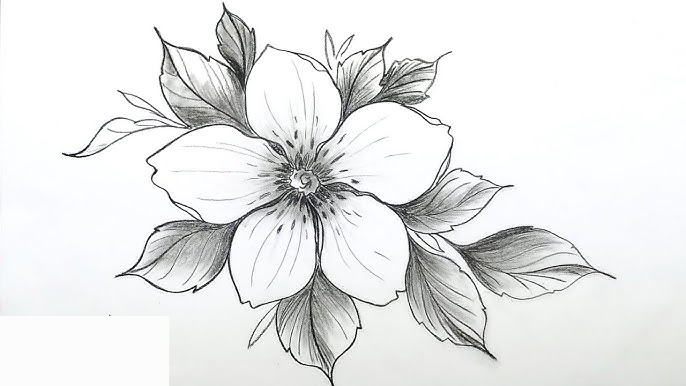
How to Master Easy:ABCGODCQC1U=Drawings for Beginners: A Step-by-Step Guide
Looking for a creative way to express yourself or teach children the basics of drawing? Easy ABC drawings offer the perfect solution. Easy:ABCGODCQC1U=Drawings Simple, fun, and highly accessible, ABC drawings can ignite your artistic journey while improving your fine motor skills and creativity. This step-by-step guide will help you understand the process of drawing the alphabet while enhancing your skills effortlessly.

What Are Easy ABC Drawings?
Easy ABC drawings are simple illustrations that revolve around each letter of the alphabet. These drawings often accompany or embellish the letters, making them fun to look at and easy to replicate. The drawings are especially useful for beginners, children, and those who want to develop their artistic skills in a playful, structured way.
Why Practice ABC Drawings?
- Boost Creativity: ABC drawings foster creativity by challenging you to associate pictures with letters.
- Improve Fine Motor Skills: Drawing helps improve hand-eye coordination, especially in young learners.
- Fun Learning: Associating each letter with a drawing makes learning the alphabet more engaging for kids.
Step-by-Step Guide to ABC Drawings
Here’s a breakdown of how you can master easy ABC drawings, even if you’re a beginner:
1. Start With the Alphabet Letter
Begin with a single letter. You can either use a stencil or draw the letter freehand. Start with simple letters like “A” or “B” to get a feel of the shape.
2. Sketch Around the Letter
Now, use your creativity to turn the letter into an object or creature. For example:
- A can become the body of an alligator.
- B can be transformed into a butterfly.
- C might turn into a simple cat.
The goal is to make the letter recognizable while seamlessly blending it into the object you’re drawing.
3. Add Simple Details
Once the basic sketch is in place, add simple details like eyes, ears, and limbs if necessary. Avoid adding too much detail that might overwhelm the simplicity of the drawing.
4. Trace and Color
After you are satisfied with your drawing, trace the outline with a black marker to give it a polished look. Then, bring your drawing to life by adding color using crayons, colored pencils, or markers.
Popular ABC Drawing Ideas
- A for Alligator
- B for Butterfly
- C for Cat
- D for Dog
- E for Elephant
- F for Fish
These are just a few ideas, but you can come up with your own creative interpretations for each letter!
Tools You Need
- Drawing Paper: Plain white paper works best.
- Pencils and Erasers: For sketching and refining your drawings.
- Black Marker: To trace the outline.
- Coloring Supplies: Crayons, colored pencils, or markers will add the final touch.
Tips for Beginners
- Keep It Simple: Don’t overcomplicate the drawing. The simpler, the better.
- Use Basic Shapes: Focus on using basic shapes like circles, rectangles, and triangles for your drawings.
- Practice Regularly: The more you practice, the better you’ll get. Set aside time each day to work on your drawings.
SEO Tips for Sharing Your ABC Drawings Online
If you’re an artist or educator wanting to share your ABC drawings online, optimizing your content for SEO can help you reach a larger audience. Here are a few tips:
- Use Descriptive Keywords: When posting your ABC drawing tutorials, use keywords like “easy ABC drawings,” “alphabet drawing for beginners,” and “kids alphabet drawing.”
- Optimize Image Alt Text: If you upload your drawings, make sure to use descriptive alt text, like “Simple ABC drawing of a butterfly using the letter B.”
- Add a Step-by-Step Guide: Search engines love detailed content, so offering a guide (like this one) can boost your visibility.
- Use Social Media: Share your drawings on platforms like Pinterest, Instagram, and YouTube to attract more views.
Advanced ABC Drawing Techniques
Once you’ve mastered the basics of easy ABC drawings, you can elevate your skills by adding more complex elements. These advanced techniques will allow you to create more detailed and engaging drawings, perfect for enhancing both creativity and artistic skills.
1. Incorporate Multiple Letters
Instead of focusing on just one letter, challenge yourself by combining two or more letters into a single drawing. For instance:
- A + B could create an alligator with butterfly wings.
- C + D might turn into a cat and dog hybrid. This not only makes the drawing more complex but also encourages thinking outside the box.
2. Play with Perspective
Introduce basic concepts of perspective by giving your drawings a 3D appearance. You can make the letter the central focus but use shadows and depth to make the illustration more dynamic. For example:
- A letter E could be drawn in 3D, with each line or section of the letter morphing into an elephant’s trunk or leg.
3. Add Texture
Texture is an excellent way to add realism to your ABC drawings. Whether you’re drawing a furry animal or a scaly reptile, using small, repetitive lines or shapes can give the impression of texture without complicating the overall image.
4. Create Background Scenes
Take your ABC drawings to the next level by creating scenes around your letters. For example:
- The letter S can become a snake slithering through a grassy field.
- H could be the frame for a house sitting on a hill. These backgrounds not only add detail but help children imagine stories surrounding their drawings, making them more interactive and engaging.
5. Experiment with Different Mediums
If you’re looking for a more creative challenge, try using different art supplies to add variety to your drawings. Watercolors, pastels, or even digital drawing tools can give your ABC illustrations a unique twist, transforming a simple alphabet drawing into a piece of art.
How to Use ABC Drawings in Education
Easy ABC drawings aren’t just for personal enjoyment. They can be a powerful tool in educational settings. Teachers, parents, and educators can use ABC drawings to make learning fun and interactive.
1. Alphabet Recognition
For younger children, associating a letter with an image can help solidify alphabet recognition. By drawing a picture that starts with the corresponding letter, kids can better remember and recognize each letter.
- A is for Apple: Drawing an apple with the letter “A” helps reinforce the connection between the letter and the word.
- B is for Boat: Illustrating a simple boat next to the letter “B” can aid in word association.
2. Creative Writing Prompts
Once the children are comfortable with drawing ABC pictures, use them as creative writing prompts. Ask children to write short stories based on their drawings. For example:
- “Tell a story about the letter ‘C’ and its journey as a cat that loves adventures.” This not only helps improve writing skills but also encourages imagination and storytelling.
3. Interactive Learning Games
Turn your ABC drawings into a learning game. Create flashcards with the letters and drawings, and have children match the letter to its corresponding drawing or guess the letter by looking at the picture alone.
Conclusion
ABC drawings are a fantastic way to introduce yourself or your child to the world of art. With a little practice and creativity, you can turn simple letters into playful drawings that bring joy to any learning environment. Whether you’re doing it for fun or as part of educational activities, mastering easy ABC drawings is a rewarding skill that anyone can enjoy.
For more great updates keep visiting TechWies




